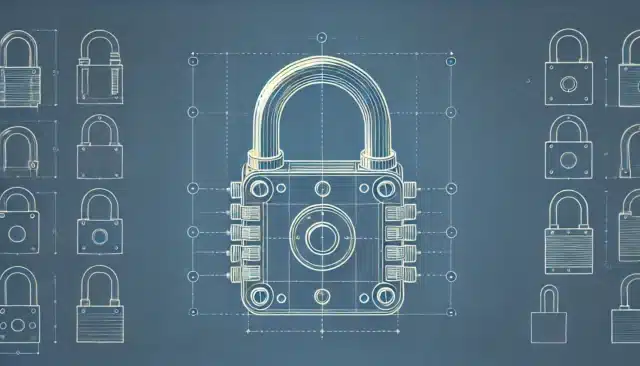Resilience blueprint: Strategic steps to build operational resiliency

Globally cybersecurity is soaring to critical levels of concern for organizations. The Veeam 2023 Data Protection Report highlights that 85 percent of organizations have been hit by at least one cyber attack, illustrating the difficult journey towards recovery. The average recovery from an attack can drag on for a staggering three weeks, not only impacting operations but also carrying with it significant financial implications. Therefore, cyber resilience must adopt comprehensive strategies to ensure operational and cyber resilience. This means companies must not only take proactive cybersecurity measures to prevent disruptions but must also implement reactive measures to ensure a quick response and complete recovery in the event of a successful cyber attack.
To improve their cyber resilience and smoothly adapt to regulatory shifts, organizations must embark on a strategic journey, weaving together crucial strategies and best practices to ensure they not only survive a threat but thrive in the ever-evolving digital landscape.
The role of risk assessments in crafting effective layered defense strategy
To start the journey to cyber resilience, companies must implement a multi-layered security approach that includes firewalls, antivirus software, intrusion detection systems, and other defensive mechanisms. It is also important to minimize the human risk and to achieve this organizations must make sure that their staff are trained on cybersecurity best practices and the implications of non-compliance with regulations. This training should be an ongoing process that employees take part in.
It is also vital that comprehensive risk assessments to identify vulnerabilities in the systems take place regularly. This process should align with the requirements of relevant regulations and standards like GDPR, HIPAA, NIS2, and DORA. It is also valuable to evaluate how the regulations affect the business and at the same time verify if the organization is covered.
The dual power of technology investments and regular updates
Investing in cutting-edge solutions for data protection, disaster recovery, and real-time oversight to stay ahead in compliance can go a long way in improving a company’s defenses against possible attack. It is equally valuable to review and update policies and procedures to mirror the current compliance landscape, covering everything from data protection to crisis management and ongoing operations assurance. This not only provides the organization with peace of mind that it is adhering to the regulatory requirements, but it also provides best practice advice on how to keep data safe and secure in the event of a breach.
In addition to this, companies must ensure their technology arsenal is fortified with the latest security patches as this routine maintenance can prove detrimental to defending against recognized threats.
Bridging education and access control with the power of continuous monitoring and testing
The weakest link in an organization's cybersecurity chain is human error. While mistakes happen, companies can minimize the possibility of employees falling for phishing attacks or similar by driving an education culture where employees are made aware of cybersecurity awareness risks and trained to avoid becoming victims.
However, while education is important is not enough to completely minimize risks. Stringent access controls form the backbone of a comprehensive security strategy, ensuring that the principle of least privilege is rigorously applied meaning that each member of the team possesses only the keys strictly required to unlock their duties, significantly reducing the surface area for potential security breaches.This approach, known as Zero Trust, provides security teams with the tools needed to constantly monitor the IT environment and ensure they are equipped to detect and respond to possible threats immediately. At the same time, it is equally important to ensure ongoing mapping and testing are carried out to stay on top of any new sophisticated threats and vulnerabilities.
Integrating Incident Response Plans with data back-up and recovery protocols
The main target of ransomware attacks is the data. To protect it, organizations must start with reliable backups, where they can significantly reduce the danger of data loss. To do this it is vital to frequently backup critical data using cutting-edge data security methods and regularly test the recovery procedures. Incorporating cyber incident response drills into recovery tests and emphasizing the ability to restore operations in a clean room environment are also important steps for resilience in the event of a cyberattack or data loss.
By incorporating these key strategies and best practices, organizations can navigate the shifting regulatory terrain with solid cybersecurity infrastructure that will help them not only withstand threats but integrate resilience into their core operations and culture.
Fundamental to the resilience strategy is a thorough, routinely updated Incident Response Plan. This roadmap should clearly outline the actions for handling security breaches, aligning seamlessly with regulations.
Board-level strategies and expert engagement enhance third-party risk management
As part of most new regulations, boards of directors are going to be legally responsible for organizations not being compliant. As such it is necessary for the resilience plan to include senior stakeholders in cyber risk management. Further, evaluate the security posture of the supply chain, focusing on the partners and third-party vendors and ensure that they meet security benchmarks, especially when managing sensitive data. Collaborating with different cyber resiliency experts and managed security service providers is also beneficial as they provide specialized skills and resources to keep abreast of regulatory updates and new compliance requirements.
In today's digital age, the landscape of cyber threats and regulatory requirements is ever-changing, therefore maintaining compliance and resilience is more challenging than ever before. When it comes to cybersecurity and cyber recovery, businesses must evaluate their strategies from multiple angles. This includes business risk, technological vulnerabilities, reputation management, and regulatory compliance perspectives. Given the absence of a one-size-fits-all approach, the role of a specialized partner becomes pivotal. Organizations must choose the right partner for their business needs offering services that cater to the unique needs of cybersecurity, data protection, recovery and compliance.
Sean Tilley is Senior Director of Sales at 11:11 systems.
